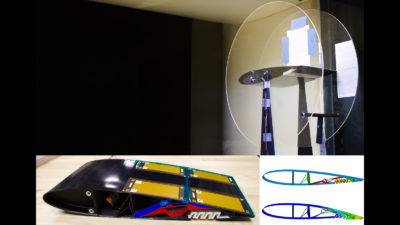Busy year of testing, robotic operations
By Jian-Feng Shi, Katherine Stambaugh and Gardell Gefke|December 2018
The Space Automation and Robotics Technical Committee works to advance the development of automation and robotics technologies and their applications to space programs.
NASA’s Johnson Space Center’s Robonaut 2 hitched a ride from the International Space Station back to Earth in May on a SpaceX Dragon spacecraft. NASA engineers discovered a fault in Robonaut’s grounding connection from its computer chassis.
A new “crew member” made from 3D-printed metal and plastic arrived on the ISS in June. The Crew Interactive Mobile Companion, or CIMON — provided by the German Aerospace Center and Airbus — uses IBM’s Watson artificial intelligence system to recognize and converse with crew members. One of the first tasks was to use CIMON as an intelligent flying camera during a complex medical experiment.
Also this year, Russian space agency Roscosmos approved a plan to send two Final Experimental Demonstration Object Research robots to the ISS in 2019. Russia has been developing the program since 2014. The robots were designed to replace humans in high-risk tasks in space.
There have been many developments in spacecraft on-orbit servicing. In January, Britain-based Effective Space signed its first contract with a “major regional satellite operator” to cover the launch of two of its Space Drone satellite life extension vehicles in 2020 for a multiyear agreement valued at more than $100 million. The DARPA-SSL Robotic Servicing of Geosynchronous Satellites mission progressed toward launch in spring 2021. The robotic payload, which the Naval Research Laboratory is constructing, held a preliminary design review in July. Many elements of the program, such as the robotic manipulators, are in flight production. The mission will include relocation, anomaly resolution, and upgrades to commercial and government client satellites.
Between June and August, the Robotic Refueling Mission 3 completed space station electrical compatibility tests and validated methane operations, bringing the mission closer to December’s expected launch. Robotic Refueling Mission 3, a project of the Satellite Servicing Projects Division, or SSPD, at NASA’s Goddard Space Flight Center in Maryland, will store and transfer cryogenic fluid in orbit, advancing satellite servicing and helping to enable long-duration space travel to the moon and Mars. For the Restore-L mission, which will robotically refuel a satellite not designed to be serviced, NASA personnel practiced autonomously tracking and grasping a client satellite’s Marman ring by using a Hexapod robot to mimic a satellite’s movement in space.
SSPD also designed an advanced tool drive system for NASA’s Langley Research Center in Virginia and the Commercial Infrastructure for Robotic Assembly and Services project and issued two licenses for use of its Cooperative Service Valve, which helps make satellites more easily serviceable and one Space Act Agreement for SSPD enabling technologies. In August, SSPD’s Robotics Tool Stowage project for providing storage of the Robotic External Leak Locator 2 outside of the ISS completed its critical design review.
In lunar robotics, the Google Lunar X Prize ended without a winner in January. However, some of the competing companies continued their work. For example, Moon Express is moving forward with its lunar-lander mission for 2019.
On Aug. 15, China’s State Administration of Science, Technology and Industry for National Defense announced it would launch its Chang’e-4 lunar lander and rover in December in the first attempt of a soft landing on the far side of the moon.
Engineers at NASA’s Jet Propulsion Laboratory in February and May operated a new drilling technique called feed extended drilling using the Curiosity rover on Mars. JPL engineers developed the technique using the force sensor feedback in the robotic arm to recenter the drill after a faulty motor prevented the drill from extending and retracting between finger-like stabilizers.
In January, the Mars Helicopter Team (JPL, AeroVironment, Langley and NASA’s Ames Research Center) demonstrated their design in Mars-like conditions. As a result, in May the Mars Helicopter Technology Demonstrator was added to the Mars 2020 mission.
Illustration: The Mars Helicopter, seen in a screen grab from an animated video, will travel with the Mars 2020 rover. The Mars Helicopter flights will be the first controlled heavier-than-air flight outside the Earth atmosphere. Credit: NASA



































